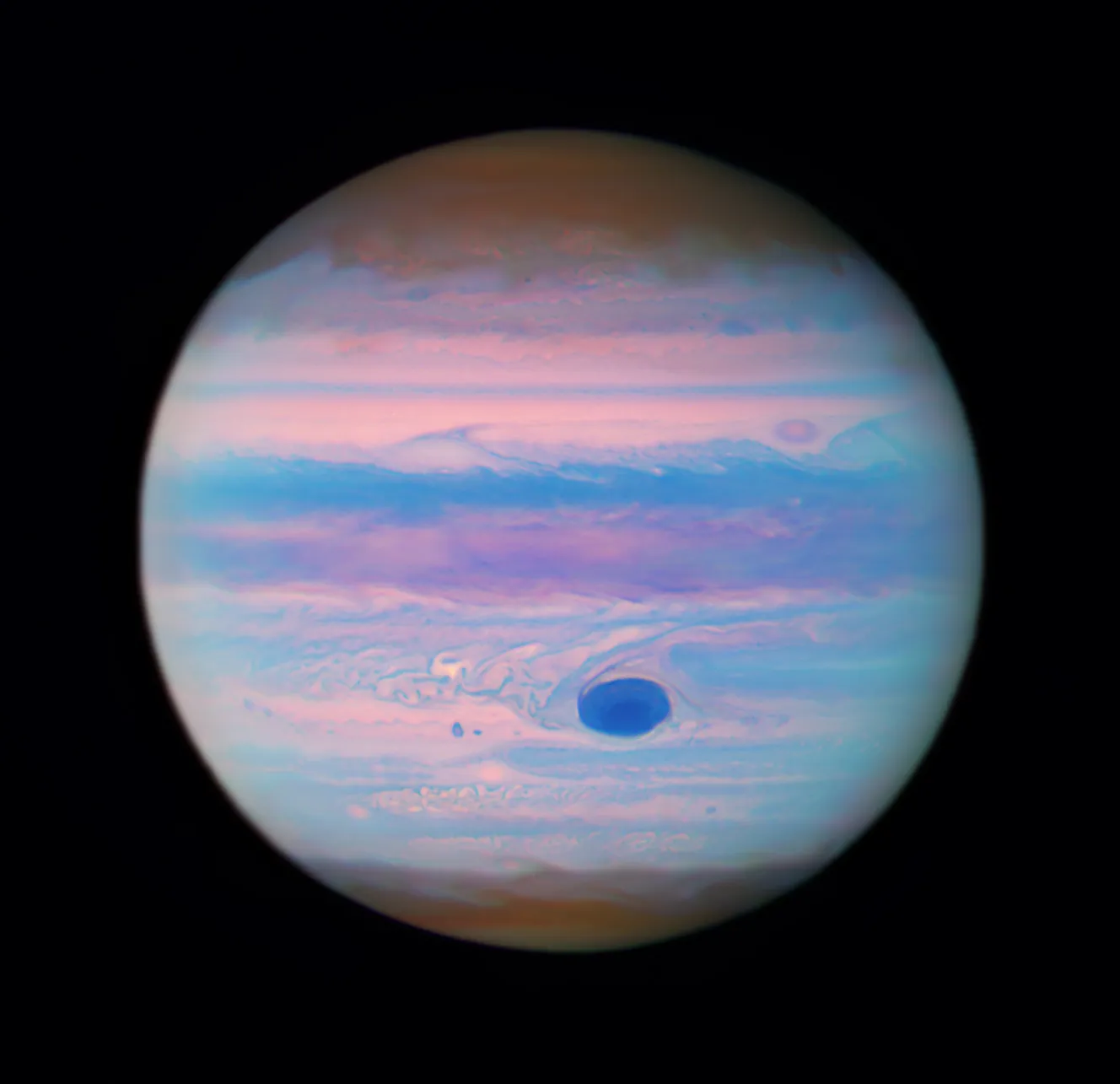This ultra-cold photo of Jupiter in pastel colors, obtained by the Hubble Space Telescope, delights with its grandeur and beauty. Take a look at this colorful composite of the ultraviolet image, revealing the various features of the atmosphere of the gas giant.

However, the most striking feature of the image is perhaps the unusual appearance of the famous Great Red Spot — in this image, it takes on a deep blue hue. A giant storm looks dark in the ultraviolet because of the high clouds covering it. These clouds absorb photons in the ultraviolet spectrum before they are reflected back to the telescope. NASA uses data collected by the Hubble project to study superstorms on Jupiter. Researchers aim to make a detailed map of deep clouds and study the three-dimensional structure of the planet’s atmosphere.
Ultraviolet light is a short, high-energy electromagnetic wavelengths invisible to the human eye. This region of the spectrum is used to study the hottest and youngest stars, often hidden by galactic dust. Ultraviolet also helps to find out the composition, density and temperature of objects between stars. Since we cannot see this part of the spectrum, ultraviolet images are artificially tinted with colors corresponding to different wavelengths.
Perihelion and Jupiter opposition
This image marked two important events: perihelion and opposition. Thanks to the first one, Jupiter has come close enough to Earth this year. This happened on November 2, when the distance between the planets was 596 million kilometers.
Opposition is the moment when the outer planet appears in the sky opposite the Sun. It is an ideal time to observe Jupiter from Earth. It can be seen in the east in the evening as a very bright object. Even a small telescope or binoculars gives you the opportunity to view the four largest Jovian moons, three of which are even larger than our Moon, and Ganymede is the largest moon in the entire Solar System.
Earlier we told amazing facts about Jupiter.
According to NASA
Follow us on Twitter to get the most interesting space news in time
https://twitter.com/ust_magazine


